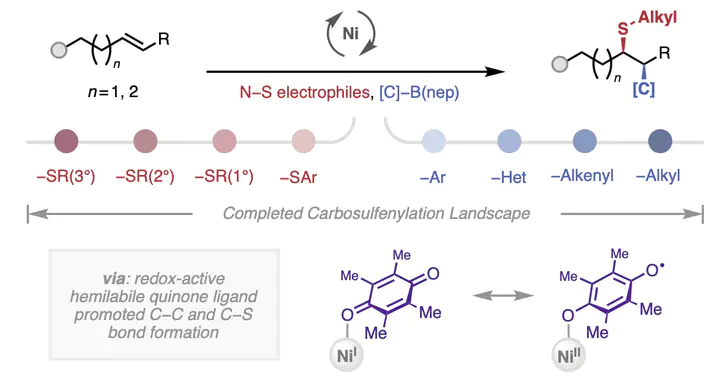Hemilabile Quinone Ligands Enable Nickel-Catalyzed C−S(Alkyl) Bond Formation in the Carbosulfenylation of Unactivated Alkenes

Abstract
A three-component coupling approach towards structurally complex dialkylsulfides is described via the nickel-catalyzed 1,2-carbosulfenylation of unactivated alkenes with organoboron nucleophiles and alkylsulfenamide (N–S) electrophiles. Efficient catalytic turnover is facilitated using a tailored N–S electrophile containing an N-methyl methanesulfonamide leaving group, allowing catalyst loadings as low as 1 mol%. Regioselectivity is controlled by a collection of monodentate, weakly coordinating native directing groups, including sulfonamides, amides, sulfinamides, phosphoramides, and carbamates. Key to the development of this transformation is the identification of quinones as a family of hemilabile and redox-active ligands that tune the steric and electron properties of the metal throughout the catalytic cycle. DFT results show that the duroquinone (DQ) ligand adopts different coordination modes in different elementary steps of the Ni-catalyzed 1,2-carbosulfenylation—binding as an X-type redox-active durosemiquinone radical anion to promote alkene migratory insertion with a less distorted square planar Ni(II) center, while binding as an L-type ligand to promote N–S oxidative addition at a more electron-rich Ni(I) center.